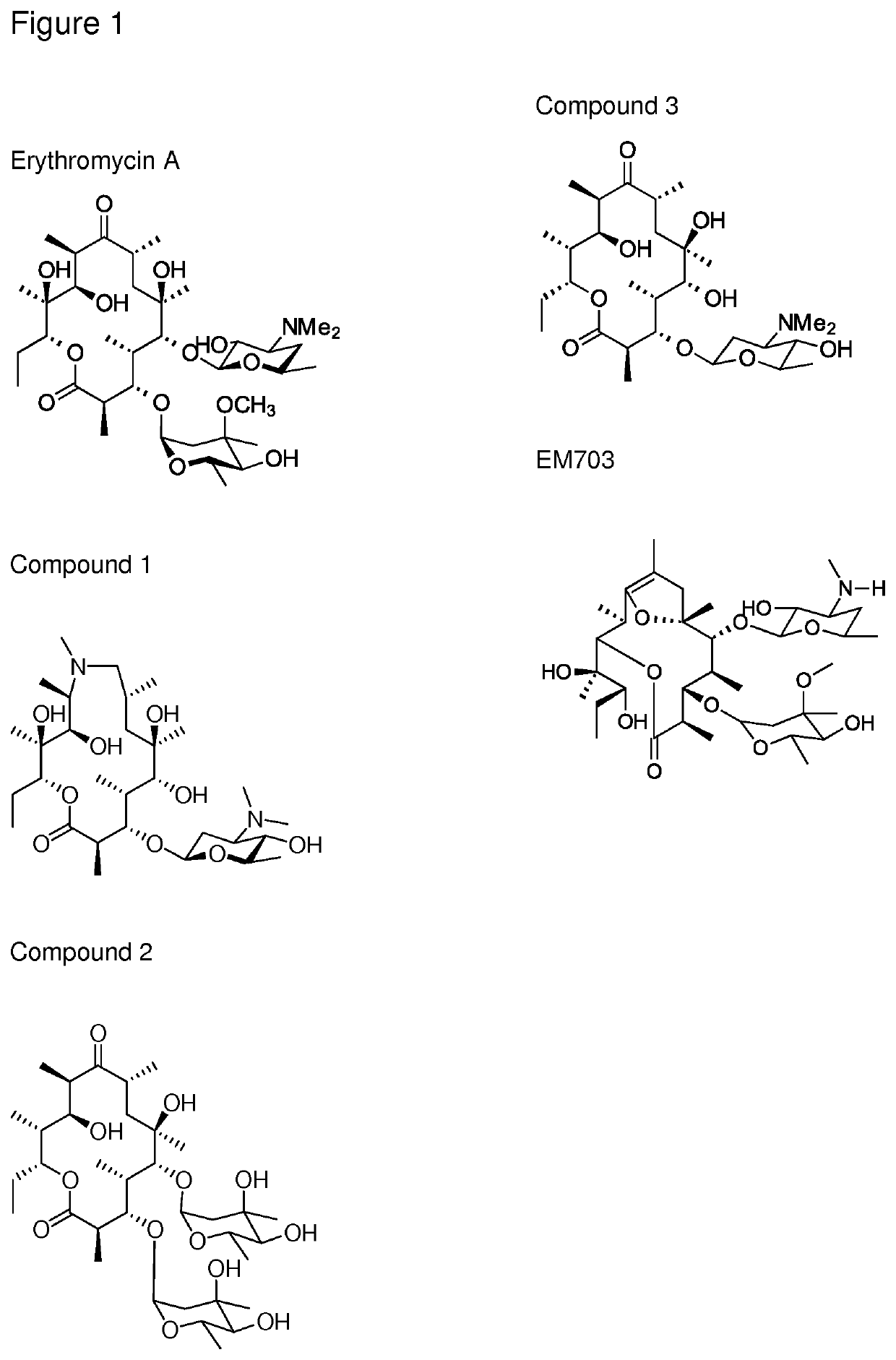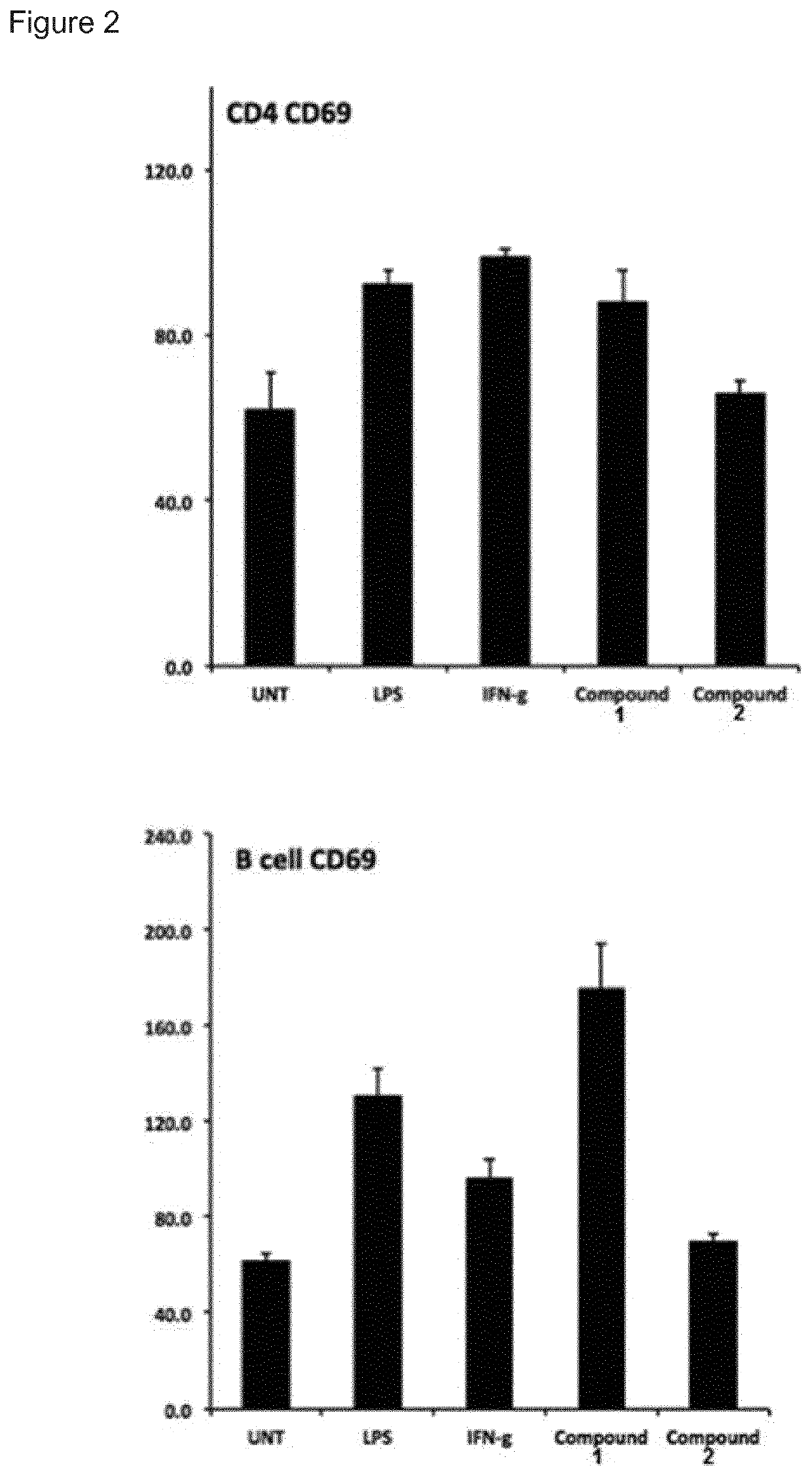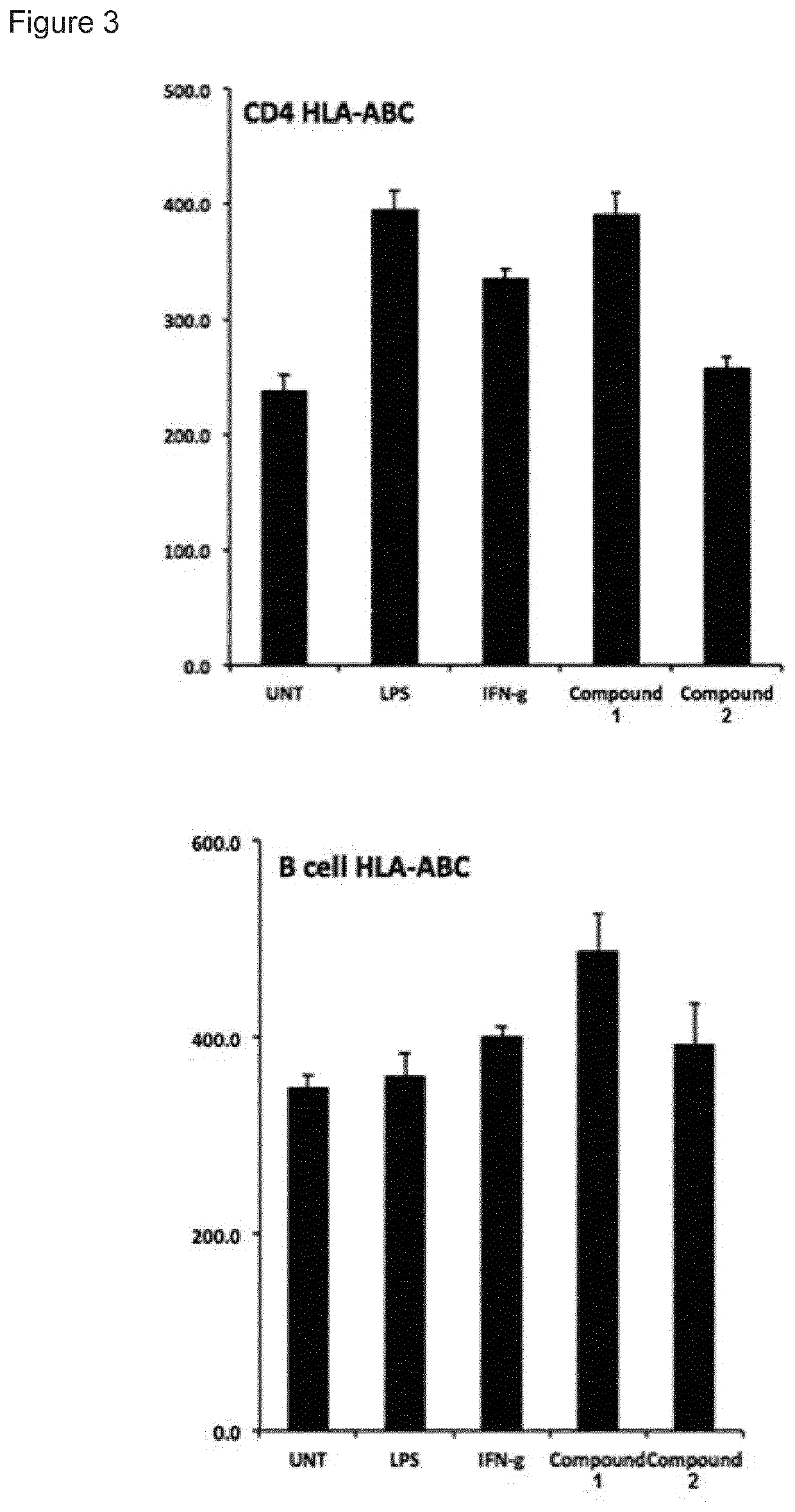Novel immune stimulating compound
a macrolide compound and immune system technology, applied in the field of immune system stimulating compound, can solve the problems of normal antigen processing, impaired loading and presentation of mhc class ii peptides derived from mtb, death of patients, and increased risk of tbc and atypical mycobacterial infections in 12
- Summary
- Abstract
- Description
- Claims
- Application Information
AI Technical Summary
Benefits of technology
Problems solved by technology
Method used
Image
Examples
example 1
n of Compound 1
[0113]Generation of az-AG
[0114]Azithromycin aglycone was generated using methods described in the literature (Djokic, S., et al., 1988). In brief azithromycin is converted to azithromycin aglycone by the acidic removal of the 3-O and 5-O sugars. The 5-O amino sugar is first oxidised and pyrolyzed to facilitate cleavage.
[0115]Generation of Biotransformation Strains Capable of Glycosylating Erythromycin Aglycones (Erythronolides)
[0116]Generation of S. erythraea 18A1 (pAES52)
[0117]pAES52, an expression plasmid containing angAI, angAII, angCVI, ang-orf14, angMIII, angB, angMI and angMII along with the actII-ORF4 pactI / III expression system (Rowe et al., 1998) was generated as follows.
[0118]The angolamycin sugar biosynthetic genes were amplified from a cosmid library of strain S. eurythermus ATCC23956 obtained from the American Type Culture Collection (Manassas, Va., USA). The biosynthetic gene cluster sequence was deposited as EU038272, EU220288 and EU232693 (Schell et al...
example 2
t of Direct Antibacterial Activity
[0141]The bioactivity of macrolide compounds against 4 strains of common gut bacteria (Escherichia coli, Streptococcus salivarius subsp. salivarius, Lactobacillus casei and Bifidobacterium longum subsp. infantis) and common mammalian skin isolate Micrococcus luteus, was assessed using the Minimum Inhibitory Concentration (MIC) assay. Bacterial strains were purchased from DSMZ (Brunswick, Germany) except M. luteus which was obtained from NCIMB, and stored in 20% glycerol at −80° C. Stock solutions (100% DMSO) of positive controls (azithromycin and erythromycin), and of test compounds 1 and 2 were diluted in broth to working stock concentrations of 256 μg / ml (final assay testing concentration range 128 μg / ml to 0.00391 μg / ml). Stock solutions of all other compounds were diluted in broth to working stock concentrations of 128 μg / ml (final assay testing concentration range 64 μg / ml to 0.00195 μg / ml). Bacterial strains were cultivated in appropriate brot...
example 3
t of Immune Stimulatory Activity
[0143]Human peripheral blood mononuclear cells (PBMCs) were purified from healthy donors with Ficoll-Paque density centrifugation. Cells were cultured in complete RPMI-1640 medium (Invitrogen) supplemented with 25 mM HEPES, L-glutamine, Sodium pyruvate (Sigma), 10% fetal bovine serum, 100 μg / mL penicillin and 100 μg / mL streptomycin (Hyclone). Cells were stimulated for 24 h (study 1-4) or 48 h to 1 week (study 5) in 37° C., 5% CO2 with increasing concentrations of compound 1 and 2 in tissue culture plates. The cells were removed from the plate, washed in PBS and analysed for expression of cell specific surface markers and MHC class I with flow cytometry using monoclonal antibodies from BD Pharmingen and a FACS Canto II flow cytometer.
[0144]Supernatant IL-10 was measured with a standard sandwich ELISA (all antibodies from BD Biosciences) after 48 hours and 7 days incubation with 2.5 uM of compound 1 and 100 U / mL IL-2 (Miltenyi Biotechnologies) in comple...
PUM
| Property | Measurement | Unit |
|---|---|---|
| particle size | aaaaa | aaaaa |
| particle size | aaaaa | aaaaa |
| concentrations | aaaaa | aaaaa |
Abstract
Description
Claims
Application Information
 Login to View More
Login to View More - R&D
- Intellectual Property
- Life Sciences
- Materials
- Tech Scout
- Unparalleled Data Quality
- Higher Quality Content
- 60% Fewer Hallucinations
Browse by: Latest US Patents, China's latest patents, Technical Efficacy Thesaurus, Application Domain, Technology Topic, Popular Technical Reports.
© 2025 PatSnap. All rights reserved.Legal|Privacy policy|Modern Slavery Act Transparency Statement|Sitemap|About US| Contact US: help@patsnap.com



